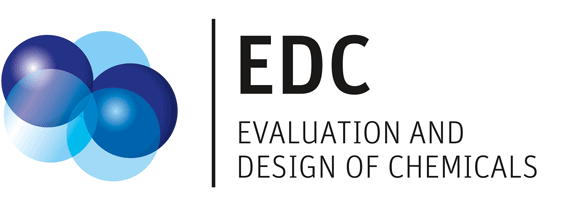Benign design of substances and products
The concept "Benign by Design" addresses the principles No. 3,4,10 of Green Chemistry. By means of a flexible workflow and the simultaneous use of experimental and computer-based methods, it is possible to specifically improve existing substances through "re-design" or to specifically develop new substances ("de novo design").
Based on the expertise of the manufacturer and the user, molecules that appear to be very suitable for the respective application can be created at the desk according to previously defined criteria ("paper chemistry") and evaluated by means of computer-based methods without prior synthesis: this enables the systematic selection of suitable substances even before investing in the synthesis of unsuitable candidates.
This approach has several advantages:
- Cost savings in development
- Time savings
- Early prioritization based on good information ("informed decision")
- Early exclusion of potential new compounds with unwanted properties even before their first synthesis
- New market potentials and advantages in application compared to competing products, e.g. by fulfilling criteria of sustainable chemistry
For example, it is possible to reduce toxicity in a targeted manner while at the same time retaining or even improving the properties required for the application. Substances that inevitably end up in the environment after use (e.g. ingredients of consumer products such as cosmetics, personal hygiene, pharmaceuticals, disinfectants, detergents), but also pesticides, flame retardants, etc. can be improved in terms of their (biological) degradability in the environment.

